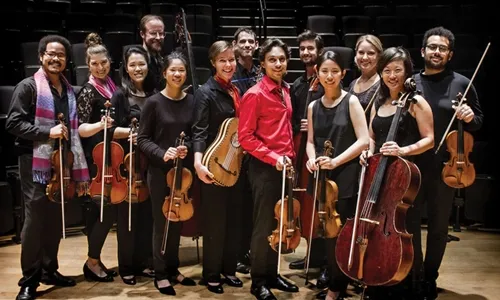
If you're one of those who can’t obtain sufficient of Vivaldi’s The Four Seasons, you’re far alone — as classical record labels found out long ago, churning out more recordings of it than just about any other piece. Market-savvy present-day composers have picked up on the phenomenal, continued popularity of the Seasons, too, and spun their own variations on the theme for fun, profit, and maybe art. And orchestras frequently pair the Vivaldi original with the contemporary sequels. So the Four Seasons industry rattles onward with this new release, a pairing of Max Richter’s “recomposed” The Four Seasons with Philip Glass’s Violin Concerto No. two, which bears the subtitle “The American Four Seasons.” In their debut album, violinist Étienne Gara and his string ensemble Delirium Musicum do the honors, playing Richter and Glass with a fiery spirit and even some vehemence.
Richter, a 57-year-old German-born British post-minimalist composer, has been a boss in the profitable genre of soothing, benign, chill-out music. His most notorious piece is the eight-and-a-half-hour Sleep, an endurance test that's designed to be a snoozefest and actually works beautiful well in that regard. What he does with Vivaldi is fill the latter’s three-movement structures with scraps the score and some original music in a minimalist style. Sometimes, Richter takes his Vivaldi straight; most other times, it veers away. The Summer first movement and Winter first movement segments arrive the closest to Vivaldi; Autumn, movement three is the sharpest departure. Glass’s influence is every, right down to the cut-off endings of each brief movement, and particularly when the music is in a minor key. The main impression is that Richter defangs Vivaldi’s more descriptive and prickly elements.
Vivaldi’s music is always headed some, as Richter frequently seems to be running or sauntering in place. While Glass doesn’t quote Vivaldi in his concerto — which was written as a concert companion piece for the Seasons —he establishes a maybe surprising kinship with the Venetian Baroque composer while remaining totally his own man. In doing so, Glass shows how closely his motorized manner of writing for strings meshes with Vivaldi’s compositional technique. . There are four movements — not with specific seasons — separated by three “songs” which serve as cadenzas of sorts for the soloist, prefaced by a prologue with a ghostly wind blowing over string trills. The “songs” aren't very fascinating in themselves; the first one is shadowed by what sounds love a halo of digital echo delay. Rather, it’s the four movements that allow the main interest, with Glass’s normal brooding lyrical bent, the trademark arpeggios, a few startling, energetic departures, and a coda that whizzes to a high-energy conclusion. Gara’s solo violin is given plenty to do throughout.
Hearing a Dolby Atmos-treated stream through headphones, the sound seems to drift between the right and left channels on the opening track of the Richter piece. Over the span of the album, there was deeper, more pronounced bass — which may not be to everyone’s taste — and a bit more air when heard with Dolby Atmos than in plain hi-res stereo. The album was recorded at The Soraya at Cal State Northridge — which also hosted live Delirium Musicum performances of Richter and Glass on May ten and eleven. Overall, the corridor is proving to be a excellent venue for recording.



